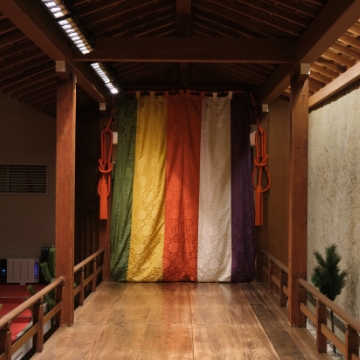
The Noh Stage

The Noh Stage

The noh
performance spaceNoh is performed in a special theatre called a nohgakudo and on a stage known as a noh butai.
A noh stage consists of a main stage (hon butai), measuring 5.4 square meters, and a bridgeway (hashigakari) for entering and exiting. The stage is equipped with a variety of devices necessary for the performance.
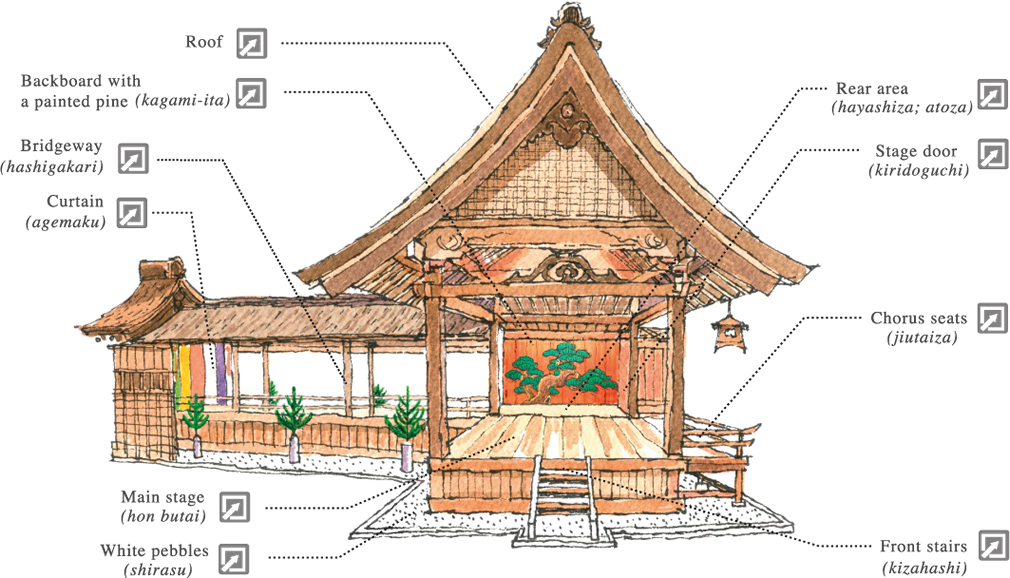
- Virtual Ohtsuki Noh Theatre
- Take a look at the inside of Ohtsuki Noh Theatre video-recorded with a 360-degree camera.
- Main stage
(hon butai) -
Wide Japanese cypress planks are laid out vertically to create the 5.4-by-5.4-square meter main stage.
Under the floor (yukashita) of the stage and bridgeway (hashigakari) are positioned a number of large clay jars. These enhance the reverberations from the stamping of feet during the play.
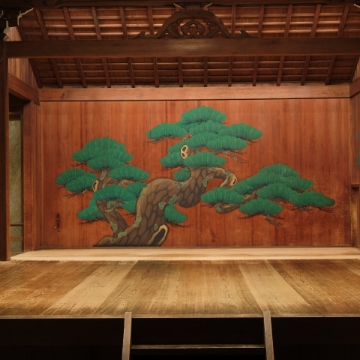
- Roof
-
A remnant from the past, when noh was performed outdoors. There are two styles of roof: roofs with two sides angled to meet at the top (kirizuma) and hip-and-gable roofs (irimoya). The roof is shingled with Japanese cypress bark.

- Backboard with a painted pine
(kagami-ita) -
The pine is a tree onto which the gods are believed to descend from heaven. In addition, since pines remain evergreen through the seasons, they are an appropriate backdrop for any noh play. The kagami-ita acts as a soundboard.
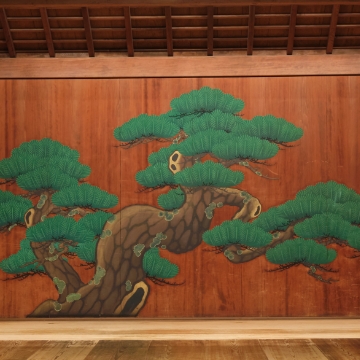
- Rear area
(hayashiza; atoza) -
An extension at the rear of the main stage, where the floor planks run horizontally. This is where the drummers and flute player sit.
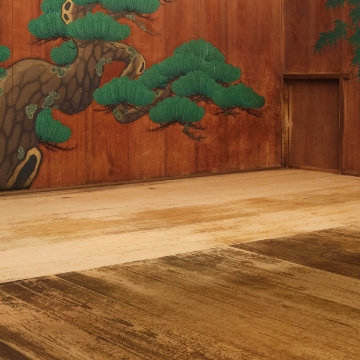
- Chorus seats
(jiutaiza) -
An extension of the main stage to the right (from the viewpoint of the audience), where the chorus sits in two rows.
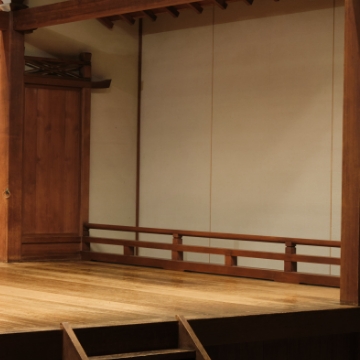
- Front stairs
(kizahashi) -
During the Edo period, the magistrate would use these steps when he opened a performance. They were also used when presenting rewards.
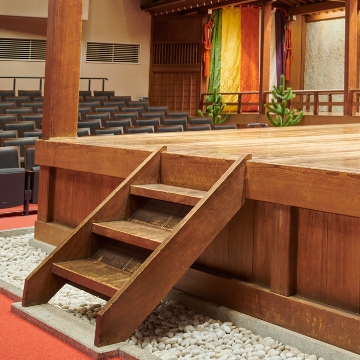
- White pebbles
(shirasu) -
Before the advent of electricity, white pebbles were spread around the periphery of the stage to catch the sunlight and reflect it onto the stage. Black pebbles placed on the outer periphery of the shirasu blocked the glare from the audience.
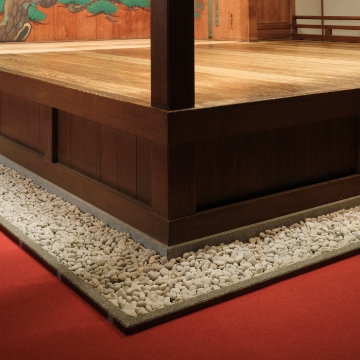
- Stage door
(kiridoguchi) -
A low sliding door at the rear of the stage, on the right from the audience’s viewpoint, through which the chorus and the stage attendants enter and exit.
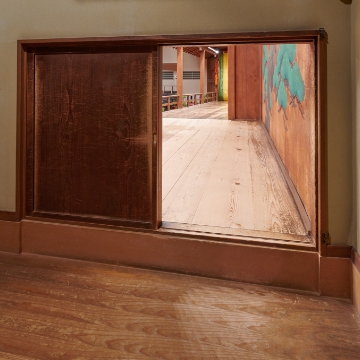
- Bridgeway
(hashigakari) -
The passageway for the actors’ entrances and exits. In addition, the hashigakari serves as an important performance space that expands the stage area. It is divided into three sections, each marked by a planted pine tree that stands in front of it. These pines are numbered, with the first being closest to the stage and the third being closest to the curtain. The size of the pines gradually becomes smaller, enhancing the sense of perspective.
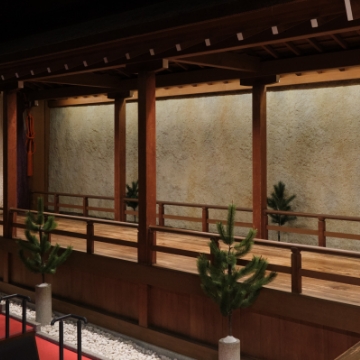
- Curtain
(agemaku) -
A five-color (blue, yellow, red, white, and purple) curtain hanging at the end of the hashigakari. When a performer enters or exits, two people raise and lower the curtain using bamboo poles.
